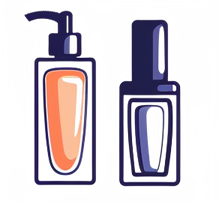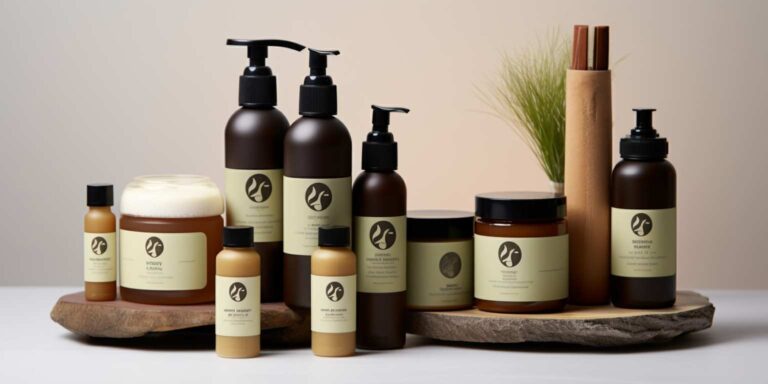The ultimate guide to tea tree oil shampoo for healthy hair
One of the standout features of tea tree oil is its antimicrobial and antifungal properties. This makes it an excellent choice for those dealing with dandruff or an itchy scalp. The oil works to cleanse the scalp, removing impurities and unclogging hair follicles, paving the way for healthier hair growth.
Dandruff Control: Tea tree oil’s antifungal properties combat the yeast that contributes to dandruff. Regular use of a tea tree oil shampoo can significantly reduce dandruff and prevent its recurrence.
Itchy Scalp Relief: The soothing nature of tea tree oil helps alleviate an itchy scalp. It provides relief from irritation and can be particularly beneficial for individuals with conditions like psoriasis or eczema.
Stimulated Hair Growth: By unclogging hair follicles and nourishing the roots, tea tree oil promotes hair growth. It stimulates blood flow to the scalp, ensuring that hair follicles receive the nutrients they need for optimal health.
Natural Lice Treatment: Tea tree oil has been used traditionally as a natural remedy for lice. Its potent properties make it an effective option for those looking to tackle lice without resorting to chemical-laden treatments.
When choosing a tea tree oil shampoo, it’s essential to look for a product with a high concentration of tea tree oil for maximum benefits. Additionally, opting for shampoos that are sulfate-free ensures a gentler cleansing experience, preserving the natural oils that contribute to overall hair health.
Caution: While tea tree oil is generally safe, some individuals may be sensitive to it. It’s advisable to do a patch test before using a tea tree oil shampoo extensively. If irritation occurs, discontinue use.
DIY Tip: For those inclined towards a DIY approach, consider adding a few drops of tea tree oil to your regular shampoo. This allows you to customize the concentration based on your preferences and needs.
Benefits of scalp treatment with tea tree
Tea tree oil has emerged as a powerful and natural solution for various skin and hair issues, with scalp treatment being one of its notable applications. The benefits of scalp treatment with tea tree extend beyond mere aromatherapy, delving into therapeutic and cosmetic realms.
Tea tree oil’s antimicrobial properties make it a potent combatant against dandruff and scalp infections. Its effectiveness in eradicating the Malassezia fungus, a common culprit behind dandruff, sets it apart as a remarkable anti-dandruff agent. Regular use can lead to a healthier scalp environment, reducing itching and flakiness.
Furthermore, tea tree oil stimulates hair growth by unclogging hair follicles and nourishing the roots. This makes it an excellent addition to hair care routines, promoting both scalp health and hair vitality. Its ability to enhance blood flow to the scalp ensures that hair follicles receive essential nutrients, fostering a conducive environment for robust hair growth.
For individuals struggling with scalp acne, tea tree oil offers a natural remedy. Its anti-inflammatory and antibacterial properties help alleviate the symptoms of scalp acne, reducing redness and preventing further breakouts. Incorporating tea tree oil into a regular hair care routine can contribute to a clearer and healthier scalp.
Dandruff, scalp infections, and acne are not the only challenges that tea tree oil can address. Its antifungal properties make it effective against various fungal infections that may affect the scalp. This versatility positions tea tree oil as a holistic solution for a spectrum of scalp issues.
When using tea tree oil for scalp treatment, it’s crucial to ensure proper dilution. Pure tea tree oil can be potent and may cause skin irritation, so it’s recommended to mix it with a carrier oil before application. This ensures that the benefits are reaped without any adverse effects.
Tea tree oil scalp treatments can be applied in various forms, including shampoos, hair masks, or direct application. Its adaptability makes it easy to incorporate into existing hair care routines. Adding a few drops to your shampoo or creating a DIY hair mask allows for a personalized and targeted approach to address specific scalp concerns.
How to combat dandruff with an anti-dandruff tea tree cleanser
Combatting dandruff can be a persistent battle, but with the right anti-dandruff tea tree cleanser, you can finally say goodbye to those pesky white flakes. Dandruff, often caused by a fungus called Malassezia, can lead to itchiness, irritation, and embarrassment. However, incorporating an anti-dandruff tea tree cleanser into your hair care routine can effectively address this issue.
Tea tree oil, derived from the leaves of the Melaleuca alternifolia tree, has long been praised for its antifungal and antibacterial properties. When used in a cleanser specifically formulated to target dandruff, it can help eliminate the fungus responsible for causing those unwanted flakes.
But how exactly can you harness the power of tea tree oil to combat dandruff? Let’s break it down:
| Step 1: | Choose an anti-dandruff tea tree cleanser that contains a significant concentration of tea tree oil. Look for products with at least 5% tea tree oil to ensure efficacy. |
| Step 2: | Wet your hair thoroughly and apply a generous amount of the cleanser to your scalp. Massage it in gently, focusing on areas prone to dandruff. |
| Step 3: | Leave the cleanser on your scalp for a few minutes to allow the tea tree oil to penetrate and work its magic. This will give the oil enough time to combat the fungus causing dandruff. |
| Step 4: | Rinse thoroughly with lukewarm water. Ensure that all traces of the cleanser are removed from your hair and scalp. |
By incorporating this simple yet effective anti-dandruff tea tree cleanser into your regular hair care routine, you can bid farewell to dandruff and enjoy a healthier, flake-free scalp. Say hello to confident, itch-free days!
Choosing the right tea tree oil shampoo
When it comes to choosing the right tea tree oil shampoo, it’s crucial to consider several factors to ensure you get the most out of this natural remedy for hair care. Tea tree oil is renowned for its antimicrobial and anti-inflammatory properties, making it an excellent choice for addressing various scalp and hair concerns.
First and foremost, check the ingredient list on the shampoo bottle. Look for a high concentration of pure tea tree oil – it should ideally be listed as one of the top ingredients. This ensures that you’re getting the maximum benefits of tea tree oil in your shampoo. Avoid products with a long list of chemicals and additives, as these may counteract the positive effects of the tea tree oil.
Fragrance-free or lightly scented? The choice depends on your preference and sensitivity. Some users prefer a fragrance-free option to minimize the risk of irritation, while others enjoy a subtle scent. However, be cautious of shampoos with overpowering fragrances, as they may indicate the presence of synthetic additives.
Consider your hair type and specific concerns. For those with oily scalps, a tea tree oil shampoo with clarifying properties can help control excess oil production. If you have a dry scalp or dandruff issues, opt for a moisturizing formula that nourishes the scalp while addressing flakiness.
When evaluating a product, pay attention to its certifications. Look for shampoos that are certified organic or carry a seal of approval from relevant organizations. This ensures that the tea tree oil used is of high quality and has undergone proper testing for purity and effectiveness.
Customer reviews can provide valuable insights into the performance of a tea tree oil shampoo. Look for feedback from individuals with similar hair concerns to yours. Keep an eye out for reviews mentioning improvements in scalp health, dandruff reduction, and overall hair condition.
It’s worth noting that tea tree oil can be potent, so if you have sensitive skin or are trying a tea tree oil shampoo for the first time, consider doing a patch test to ensure you don’t experience any adverse reactions.
Routine for maximizing tea tree oil benefits
Tea tree oil, derived from the leaves of the Melaleuca alternifolia plant, is renowned for its numerous health benefits. Incorporating it into your daily routine can enhance its effectiveness and promote overall well-being. Let’s delve into a comprehensive routine to maximize the benefits of tea tree oil.
Cleansing: Begin your routine with a gentle cleansing of the skin. Use a mild cleanser to rid your face of impurities and excess oil. This sets the stage for the tea tree oil to penetrate the skin more effectively.
Exfoliation: 2-3 times a week, include exfoliation to remove dead skin cells. This not only unclogs pores but also ensures that tea tree oil can reach deeper layers of the skin. Avoid over-exfoliating, as it may lead to irritation.
Steam: Introduce steam into your routine to open up pores. This helps tea tree oil to penetrate more deeply, maximizing its antimicrobial properties. A facial steam for 5-10 minutes is sufficient to prepare your skin.
Toning: Apply a tea tree oil-infused toner to balance the skin’s pH levels. This step not only refreshes your skin but also preps it for the subsequent application of tea tree oil.
Targeted Application: Use undiluted tea tree oil sparingly on blemishes or areas prone to acne. Its antibacterial and anti-inflammatory properties can work wonders in treating specific skin concerns.
Custom Blends: Experiment with custom blends by combining tea tree oil with carrier oils like jojoba or coconut oil. This not only dilutes the potency but also adds complementary benefits, such as moisturization.
DIY Masks: Incorporate tea tree oil into your DIY face masks. A simple concoction with ingredients like honey or clay can address various skin issues, leaving your skin refreshed and rejuvenated.
Hair Care: Extend the benefits to your hair by adding a few drops of tea tree oil to your shampoo. This helps in maintaining a healthy scalp, preventing dandruff, and promoting overall hair health.
Nail Treatment: Include tea tree oil in your nail care routine to combat fungal infections and promote healthy nail growth. A diluted mixture can be applied to the nails and cuticles regularly.
Aromatherapy: Harness the power of tea tree oil through aromatherapy. Diffuse the oil in your living space to enjoy its antimicrobial properties, promoting a clean and invigorating environment.
Caution: While tea tree oil offers a plethora of benefits, it’s crucial to perform a patch test before extensive use. Some individuals may be sensitive to its potency, and dilution is recommended for those with sensitive skin.
Tips for integrating tea tree shampoo into your hair care regimen
Integrating tea tree shampoo into your hair care routine can bring a refreshing change and offer numerous benefits for your scalp and hair health. Whether you’re dealing with dandruff, oily scalp, or simply want to enhance your hair’s natural shine, incorporating this natural wonder into your regimen can work wonders.
Tea tree oil is renowned for its antimicrobial and antifungal properties, making it an excellent ingredient for treating various scalp issues. When selecting a tea tree shampoo, ensure it contains a high concentration of tea tree oil for maximum effectiveness.
Before diving headfirst into using tea tree shampoo, it’s crucial to understand how to properly integrate it into your hair care routine. Here are some essential tips to get you started:
| Tip | Description |
| 1. Dilute if Necessary | If you have sensitive skin, consider diluting the tea tree shampoo with water to avoid potential irritation. Start with a small amount and gradually adjust the concentration to suit your scalp’s tolerance level. |
| 2. Use Sparingly | Tea tree shampoo is potent, so you only need a small amount to lather and cleanse your scalp thoroughly. Using too much can strip your hair of its natural oils and cause dryness. |
| 3. Focus on the Scalp | Massage the tea tree shampoo into your scalp using gentle circular motions. This allows the antifungal properties of tea tree oil to penetrate the skin and combat dandruff-causing fungi effectively. |
| 4. Let It Sit | After applying the shampoo, leave it on your scalp for a few minutes before rinsing. This gives the tea tree oil enough time to work its magic and provide maximum benefits. |
| 5. Follow with Conditioner | Since tea tree shampoo can be drying, it’s essential to follow up with a hydrating conditioner to restore moisture and keep your hair soft and manageable. |
Common mistakes to avoid when using tea tree oil shampoo
When it comes to using tea tree oil shampoo, there are several common mistakes that people often make, unknowingly compromising the effectiveness of this powerful natural remedy. To ensure you get the most out of your tea tree oil shampoo experience, it’s crucial to steer clear of these pitfalls.
One of the most common mistakes is overuse. While tea tree oil can work wonders for your hair and scalp, using too much of it can lead to irritation and dryness. Remember, a little goes a long way. Dilute the shampoo if necessary, and always follow the recommended usage instructions.
Another mistake is using it too frequently. Although tea tree oil has antibacterial and antifungal properties, using it daily can strip your hair and scalp of natural oils, leading to dryness and irritation. Aim to use it 2-3 times a week at most to maintain a healthy balance.
Not rinsing properly is another common blunder. Tea tree oil residue left on the scalp can cause itching and irritation. Make sure to rinse your hair thoroughly after shampooing to remove all traces of the product.
Combining incompatible products is also a mistake to avoid. Some ingredients in other hair products may counteract the benefits of tea tree oil or even cause adverse reactions. Be cautious when mixing different products and consider using ones specifically formulated to complement each other.
Ignoring allergies or sensitivities is a risky move. While tea tree oil is generally safe for most people, some individuals may be allergic or sensitive to it. Always do a patch test before using any new product containing tea tree oil, especially if you have a history of skin allergies.







